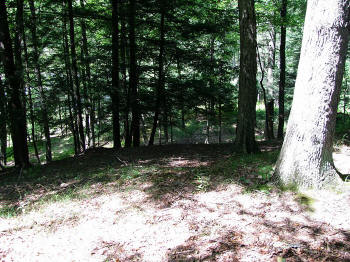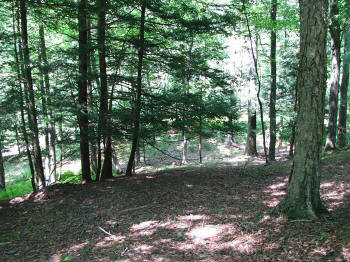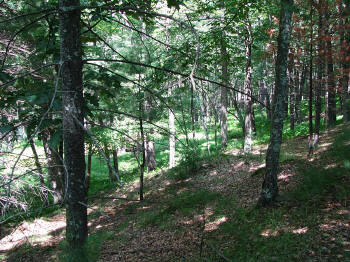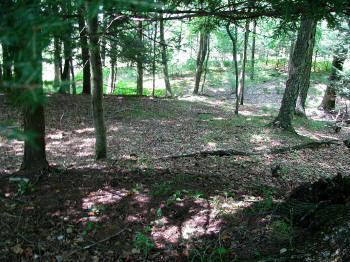|
(2010-15)
Enlarge
Chaplain Scott J. Payne and another visitor to the site honor the men
who were killed that hot July day in 1864 |
|
(2010-17)
Enlarge Possible location of
burial trenches
Most of the Union guards riding on the open platforms lost their lives
as the wooden coaches telescoped into one another, some splitting open
and strewing their human contents onto the tracks where flying glass,
splintered wood, and jagged metal killed or injured them.
The two ruptured engine tenders towered over the wreckage, their massive
floor timbers snapped like matchsticks. Those riding in the last cars of
the troop train escaped death, though many were injured |
|
(2010-18)
Enlarge
Possible location of burial trenches
Union officers quickly threw a ring of uninjured guards around the scene
to prevent a mass escape of the Confederates, though few of the
prisoners entertained such thoughts at the time. Despite this precaution
five rebels took advantage and were never retaken. One was said to have
lived for many years afterward in the town of Matamoras, Pennsylvania,
some 20 miles away. Another, who was hired by a local farmer, stayed
through harvest season, eventually growing homesick, he joined the Union
army in order to be sent sent South. As fate would have it, he was put
in charge of a group of Confederate prisoners, one being his very own
brother |
|
(2010-19)
Enlarge
Possible location of
burial trenches
At least 51 Confederate prisoners and an
official total of 17 Union guards died either on the spot or within a
day of the wreak. Thirteen soldiers of the 51st North Carolina Infantry
lost their lives in a few seconds. Confederate corpses were laid in
rows, the most hideously mangled among them were covered with grass and
leaves. The Union dead were wrapped in blankets and set apart from the
Confederate. North Carolina infantryman Albert G. Smith wrote to his
wife,
"I got heart [hurt] in coming up hear by the cars running
together but I am not confined. We are faring very well and are treated
very kind, more so then I thought we would be." |
|
(2010-20)
Enlarge
Possible location of burial trenches
A messenger was dispatched to Shohola for assistance. The injured were
conveyed to Shohola on the wagons and carriages of farmers and
villagers. Six doctors rendered medical attention with help from
volunteers from Shohola and Barryville, a hamlet across the Delaware
River in New York. The village of Shohola housed over 100 injured as
well as uninjured prisoners and guards. They were brought to the Shohola
railroad station and Chauncey Thomas Shohola Hotel. Townsfolk from both
Shohola and from Barryville immediately sprang into action, bringing
milk, bread, cake, and tea along with bandages and sheets for the
wounded |
|
(2010-21)
Enlarge
Possible location of
burial trenches
The prisoners at first were fearful of
being poisoned by the Yankees, but soon realized that, although they
were enemies, they were kindly taken care of. The site led one newspaper
reporter to compare the scene to
tales of blood, scenes of slaughter, and the accumulated horrors of the
battlefield
{brought} to us, face to face, amid the quiet of civil life.
|





